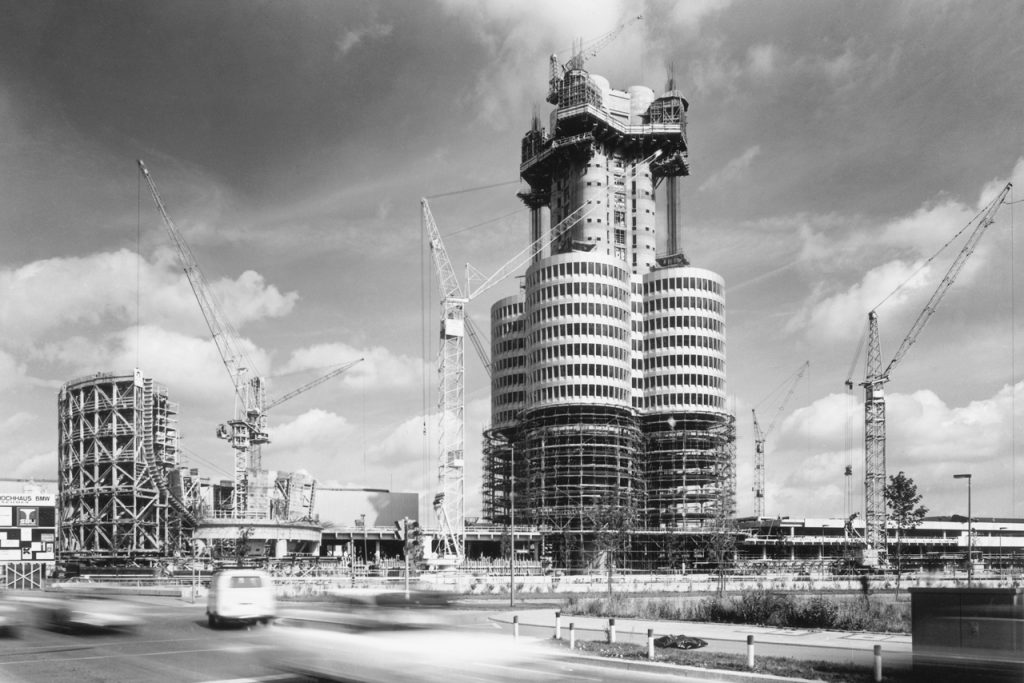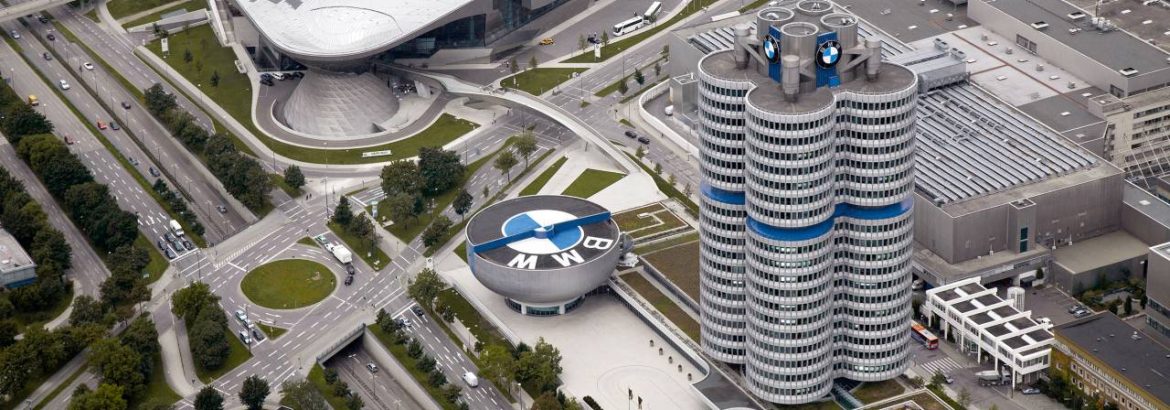In the heart of Munich, Germany, a masterpiece of architectural brilliance rises above the city’s skyline.
The BMW Headquarters, with its striking design and innovative engineering, stands not only as the corporate hub of a renowned automotive giant but also as a symbol of artistic excellence and technological advancement.
This iconic building, designed by the visionary architect Karl Schwanzer, is more than just an office complex; it is a testament to the marriage of form and functionality.
A Vision Unveiled

In the late 1960s, as BMW sought to redefine its corporate identity and symbolize its commitment to innovation, the company commissioned Austrian architect Karl Schwanzer to create a headquarters that would break away from traditional office architecture. Schwanzer, known for his avant-garde ideas, embraced the challenge with fervor.
“For Schwanzer, the BMW HQ job came at the right moment in his architectural career. He had already designed and realized several such buildings and headed Vienna Technical University’s Dept. of Building Theory and Design since 1960,” noted Leonie Manhardt, who worked closely with Schwanzer.
The Iconic Four-Cylinder Tower

Schwanzer’s vision gave birth to the iconic Four-Cylinder Tower—an architectural marvel that redefined Munich’s skyline. This towering masterpiece, stretching 99.5 meters into the sky, consisted of 22 levels, housing offices, boardrooms, and a basement.
Its four cylinder-shaped core elements encapsulated a vision of modern office spaces conducive to seamless communication and collaboration, referred to as “gebaute Kommunikation,” which translates to “constructed communication.” This term highlights the building’s unique ability to seamlessly blend practical solutions with powerful messaging and distinct symbolism.
What set the Four-Cylinder Tower apart was not just its design but its groundbreaking construction method.
Instead of being built on a traditional foundation, the almost 100-meter-tall building wasn’t built from the bottom up, as is usually the case, but constructed “from above”; the upper floors were built first, “hanging” from the steel roof construction, while the four cylindrical main elements were created on the ground, then moved upwards hydraulically and completed in segments. This methodology further illustrated the futuristic and innovative nature of the BMW headquarters.
The Atrium and the Golden Staircase

The BMW Headquarters is more than just its iconic tower. A grand atrium serves as the connective tissue between the various wings of the complex, offering a sense of unity and openness. Upon entering the atrium, visitors are greeted by the breathtaking sight of the Golden Staircase—a winding, elegant structure adorned with golden railings that seem to float in the space.
This staircase, a true architectural marvel, represents the company’s ascent in the automotive industry.
The atrium is bathed in natural light, thanks to the expansive glass walls that surround it. These walls are designed to provide an unobstructed view of the neighboring Olympic Park, creating a sense of harmony between nature and industry.
As visitors explore the atrium, they are treated to a showcase of BMW’s rich history, with classic cars displayed like works of art. It’s a tribute to the company’s legacy and an invitation to embark on a journey through time.
The Vision Realized

The completion of the headquarters, commonly referred to by the employees as the “Hochhaus”, coincided with a significant moment in BMW’s history: the unveiling of their pioneering fully electric vehicle, the BMW 1602e. This groundbreaking car showcased the possibility of designing and manufacturing an electric vehicle powered exclusively by batteries—a remarkable achievement, especially when considering the current context, five decades later.
Today, BMW is at the forefront of the electrification movement, boasting a comprehensive lineup of all-electric premium vehicles and numerous upcoming models in the pipeline.
The building was completely renovated and modernised in 2004 to bring it up to date with the constantly changing world of work. The exterior image remained unchanged, however, on closer examination, all façade elements were cleaned, newly soundproofed, and insulated, and more than 2,300 window panes were replaced.
There is an improved supply of light and fresh air to the workplaces inside as well as a completely new lift system.
The BMW Museum – A Voyage Through Automotive History
Adjacent to the headquarters stands the BMW Museum, an architectural gem in its own right. Designed by Karl Schwanzer, this elliptical structure is a dynamic expression of movement and speed, mirroring the essence of BMW’s automobiles. The museum serves as a bridge between the company’s past, present, and future.
Inside the BMW Museum, visitors embark on a captivating journey through automotive history. The exhibition space is a seamless blend of design and functionality, with each section meticulously curated to tell the story of BMW’s evolution. From vintage classics to cutting-edge concept cars, the museum’s collection showcases the brand’s relentless pursuit of innovation and perfection.
The BMW Museum also offers an immersive experience, allowing visitors to witness the intricacies of automobile production through interactive displays and multimedia presentations.
It’s a glimpse into the future of mobility, where electric and autonomous vehicles are poised to revolutionize the industry.
A Testament to Timelessness
As the years have passed, the BMW Headquarters has not only maintained its architectural relevance but has also become a symbol of Munich itself. It’s a living testament to the city’s embrace of innovation and design excellence. In an era where architectural trends often come and go, this iconic building has stood the test of time and solidified its place in the annals of history.



